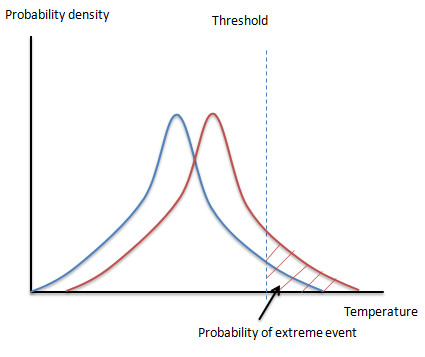 http://www.youtube.com/watch?v=_j1KGHOvSkM
http://www.youtube.com/watch?v=_j1KGHOvSkM
Somewhat unAmericanly, when I am interested in scientific data beyond my own cognizance or competence, I find myself consulting sources of information where the people writing about the subject know something, you know, about what the hell they're talking about. This is not actually a bad approach to the arcane and complicated, I find. When in doubt, read something by someone who has studied the subject thoroughly and has come to some honest conclusions about what he or she has looked into. Following such a practice, of course, can place one at odds with the predominant style of opinion-formation in this great land of ours, which might be called blowing it out your barracks bag.
For example, on this global warming issue, which has been relegated to the back burner, so to speak, I read the comments by trolls on various websites and come away with an impression, which is certainly not based on an unskewed sample (because AGW denialists, by their very nature, patrol the vast Internet looking for opportunities to wreak destruction on future generations with a triumphant display of their conventional ignorance and borrowed "gotcha" points, a current favorite being the "solar maximum" argument), and I wonder: does anyone have a simple way to explain the extremes in either direction which seem to be plaguing the world weatherwise? (Today's Secret Word, and I'm sorry Groucho Marx's bird can't drop down to reward you.)
It's been cold and snowy back East this year, although probably not a lot different from the weather which prevailed in the Northeast at the end of "a Little Ice Age" around 1970 (this period of abnormal cold also was present in New England during Thoreau's life there, as reflected in Walden's descriptions of intense cold and deep Pond freezing), so people look at all those snow-blowers and conclude that global warming is a hoax. My own surmise, which is confirmed to a degree by what I read (see above) is that the introduction of all that "forcing energy" in the form of trapped solar infrared radiation would naturally power more violent winds, more copious uptake of ocean evaporation, more of everything, and in cold weather months you would get exactly what we're seeing, blizzards and howling winds, although not necessarily record cold temperatures. All of this happens against a backdrop of an inexorably warming Earth, because there is also no doubt that year after year, the planet is setting records for "warmest year on record, warmest decade on record," et cetera.
The graph above is an elegant depiction of how this works. The bell curve of temperature has been shifted to the right by global warming, reflected as the red curve on the x-axis. The y-axis represents the distribution of weather events, with most of them clustered around the normal range, as is the case (by definition) with bell curves. Along the x-axis, under the fat tails, we can see the effect of skewing the average temperature to the right (warmer). The probabilities of events associated with abnormally warm temperatures (Australia's floods, Russia's epic heat wave destroying 30% of the wheat crop, China's wells going dry), increase in likelihood because the region of distribution (the "fat tails) has been enlarged. Meanwhile, because the average temperature of the Earth has increased on a constant basis, the ongoing problems continue at an accelerating rate (the cascading meltdown of Greenland, Himalayan and South American glaciers, the softening of the tundra, chunks the size of Massachusetts breaking off Antarctica).
It's a kind of dismal consolation, but at least this graphic depiction enables one to grasp why we're seeing the patterns we're seeing. The destruction already caused by AGW seems pretty far advanced, but one can cling to the hope that educated countries outside the theocratically-inclined United States might still organize to do something about it.


Bability? The noise level due to babbling?
ReplyDelete